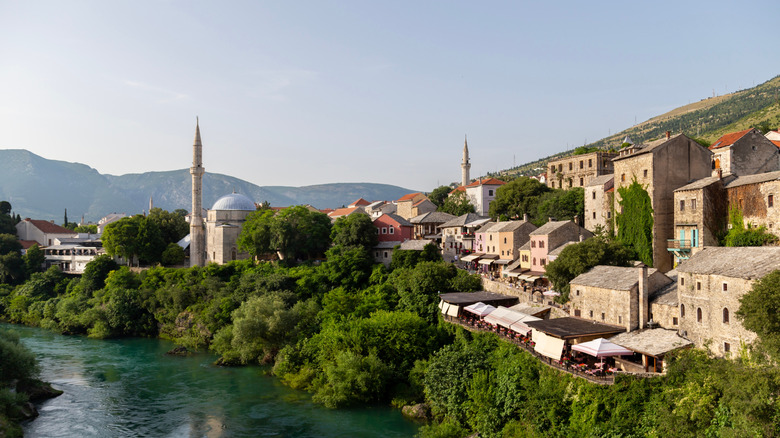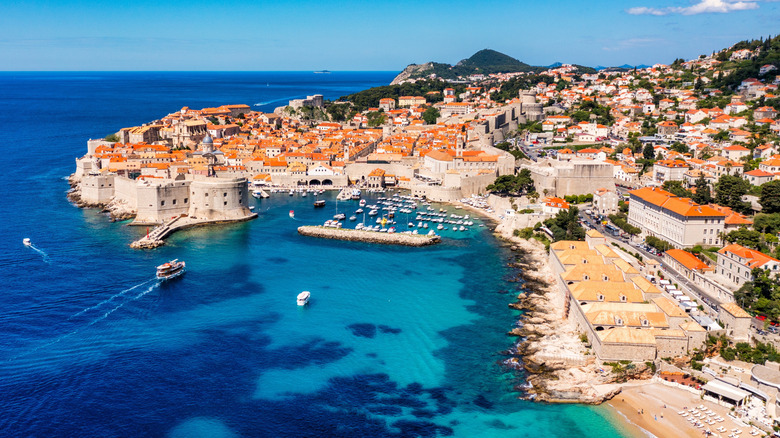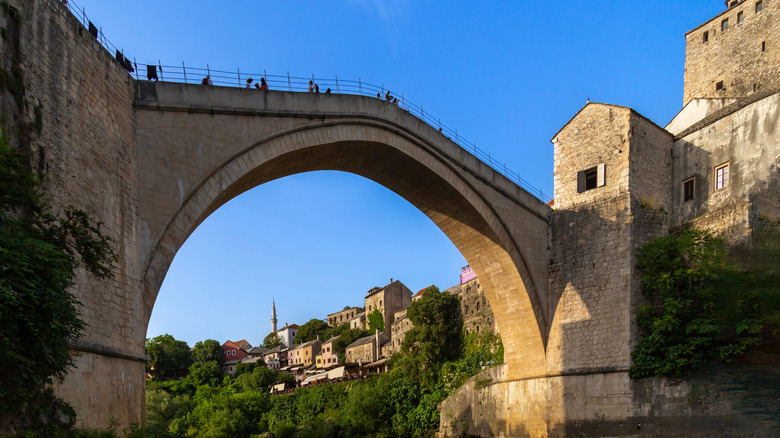Rick Steves Says Daytripping Between These Two Cities Is 'One Of Europe's Richest Experiences'
In the sun-drenched heart of the Balkans, where the sparkling waves of the Adriatic give way to rugged mountains and ancient towns etched with history, lies one of Europe's most captivating cultural crossings. Dubrovnik, often dubbed the "Pearl of the Adriatic," enchants visitors with its incredible Medieval architecture, intense city walls, and shimmering coastline. Not to mention, Game of Thrones fans will revel in the endless opportunities to explore filming locations.
However, according to European travel expert Rick Steves, venture just over two hours inland from this stunning coastal city and you'll find yourself in another world entirely. "The city's Ottoman influence is evident," Steves explains in an article on his website. "From traditional Turkish-style houses (including several open to visitors), to lively Coppersmiths' Street (with the flavor of a Turkish bazaar), to the call to prayer, echoing throughout the city five times a day."
Mostar, a city in Bosnia and Herzegovina, is a place where the scars of religious conflict, although still fresh, are juxtaposed against a backdrop of resilience and rebirth. Embarking on a day trip to Mostar from Dubrovnik is not merely about ticking off another destination. As Steves says, "Visiting these two pieces of the former Yugoslavia is like turning a history and politics textbook inside out, shaking its contents all over the earth, and then playing in it." When visiting Dubrovnik, don't miss the opportunity to day trip to neighboring Mostar — an ideal adventure for curious travelers seeking more than just postcard views. It's a rare chance to see how two nations now tell their stories through architecture, cuisine, and religion.
What to see in Dubrovnik before visiting Mostar
Beginning on the Croatian side, visitors to Dubrovnik will notice its commanding presence. Encircled by massive stone walls dating back to the 13th century, the city offers some incredible historic architecture, including a combination of Renaissance and Baroque styles. No visit to Dubrovnik would be complete without walking the entirety of its city walls — a feat of Medieval engineering, UNESCO World Heritage Site, and fascinating comparison to Mostar's own UNESCO feature. As a former stronghold of the independent Republic of Ragusa and later incorporated into Yugoslavia, Dubrovnik carries centuries of layered history. Today, travelers flock here to experience its beauty, but few realize that this city is also a gateway to one of Europe's most eye-opening cultural contrasts across the border in Bosnia and Herzegovina.
Dubrovnik's charm is shaped by trade, diplomacy, and recovery from war, while just across the border, Mostar offers a different narrative — one deeply marked by religious convergence, conflict, and resilience. For curious travelers, Dubrovnik isn't just a postcard-perfect destination — it's the first part of a larger story in a region that has seen empires rise and fall, cultures intertwine, and borders shift dramatically, all while maintaining a distinct and vibrant identity.
What makes Dubrovnik particularly fascinating, especially when paired with a visit to Mostar, is how both cities have endured the burdens of the past while presenting vastly different yet interconnected narratives. Dubrovnik stands as a polished reminder of a wealthy, walled city that endured invasion and reemerged with its heritage intact. Mostar, by contrast, still bears visible wounds of its conflict, and yet it hums with rebirth, multiculturalism, and reconciliation.
Experience the best of Mostar in a day
You can drive or catch the bus from Croatia to Bosnia and the border-crossing is typically seamless. Alternatively, there are guided day tours that can take you to Mostar with needing to rent a car. Once you arrive, begin by exploring a UNESCO World Heritage Site, the Stari Most (or old bridge). Built in the 16th century by the Ottomans, it was a long-standing symbol of unity before its destruction during the Bosnian War in 1993, but was rebuilt in 2004 using original techniques and materials. As Steves puts it, "Surveying the town from the crest of the bridge is a powerful experience. The cityscape is a symbol of Mostar's past religious conflict."
For an even better view of the bridge, make your way towards the Koski Mehmed Pasha Mosque. Built in 1618, the mosque has been — and remains — an important architectural landmark of Mostar. There is a small fee (around $9) to enter, but once inside, you can explore the interior, courtyard, and head up the slender minaret for an unbeatable view of Stari Most and the surrounding city.
From here, head towards the cobblestone lanes of Mostar's Old Bazaar, a vibrant area full of artisan shops, textile stalls, metalworkers, and small cafes. This part of the city invites visitors to take a sensory journey through the city's diverse influences and engage with local residents. While you're here, be sure to try some of Mostar's unique cuisine, which reflects the country's mix of Ottoman, Mediterranean, and Central European influences. In Mostar, you'll find hearty grilled meats, savory pastries, delicious soups, and sweet treats that are sure to hit the spot after a long day of sightseeing. As Rick Steves notes, traveling from Dubrovnik to Mostar is like turning a history book inside out. It's not simply a border crossing — it's a journey between worldviews, historical experiences, and architectural legacies.


